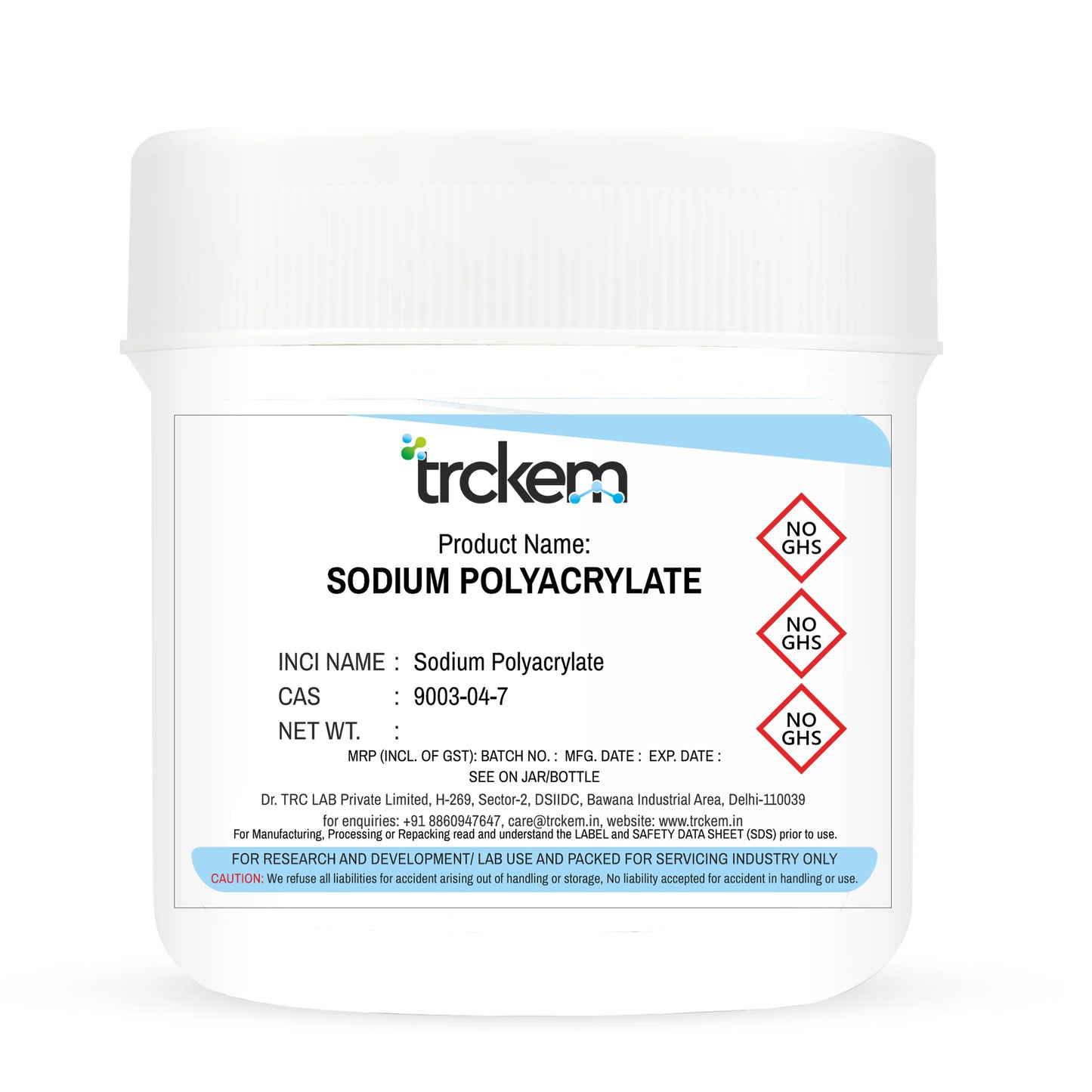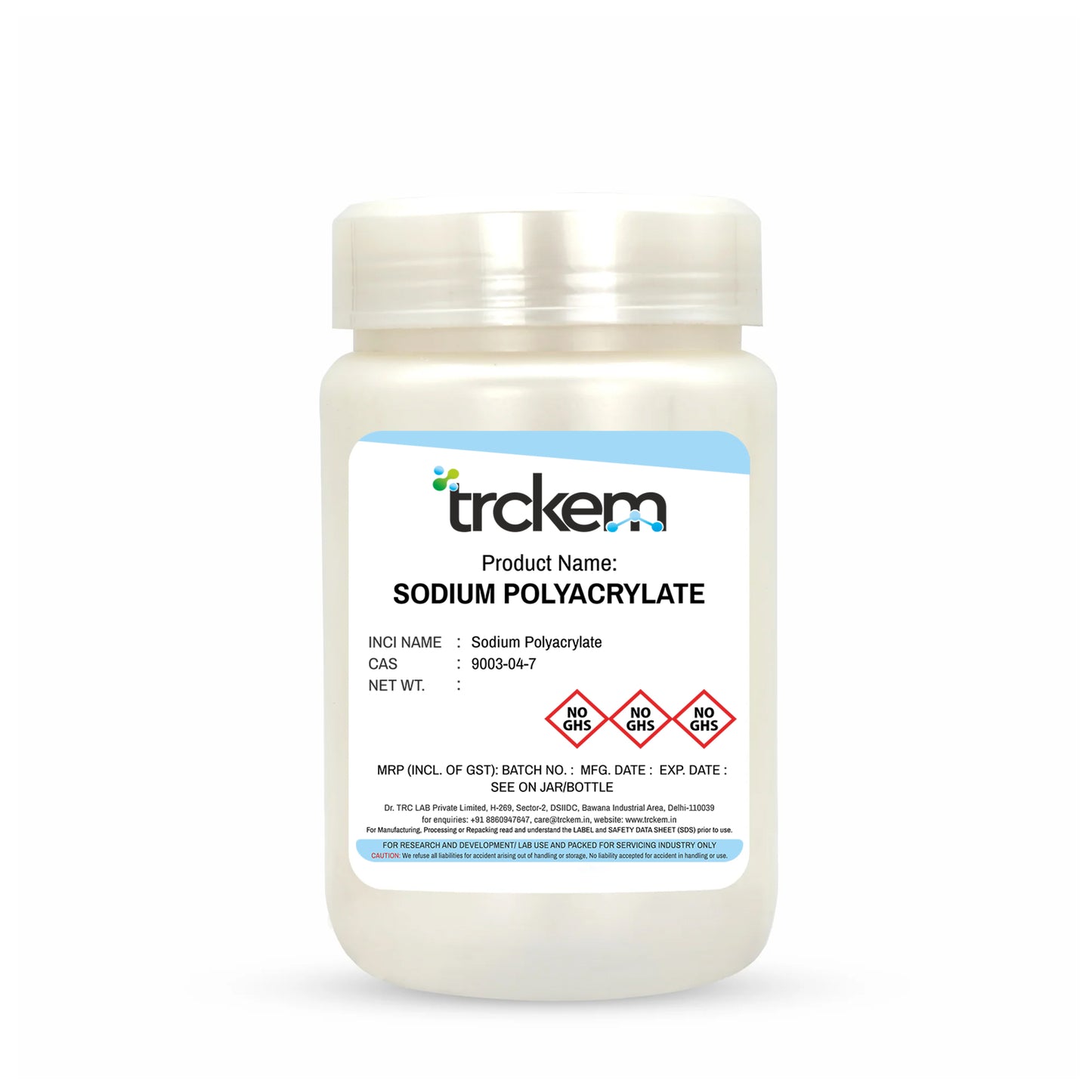

FAQ (Frequently Asked Questions)
1. What is Sodium Polyacrylate?
Sodium Polyacrylate is the sodium salt form of polyacrylic acid—a high-molecular-weight, anionic polymer known for its super-absorbent properties. It can absorb between 100 to 1,000 times its weight in water, forming a gel-like matrix that thickens and stabilizes formulations.
2. What are the CAS Number and INCI Name of Sodium Polyacrylate?
CAS Number: 9003-04-7 (also includes related numbers such as 25549-84-2, depending on form).
INCI Name: Sodium Polyacrylate.
3. What benefits does Sodium Polyacrylate offer in personal care formulations?
Sodium Polyacrylate brings multiple functional benefits:
Absorbent: Exceptional water absorption for hydration control.
Thickening & Viscosity Control: Builds gel-like textures in water-based products.
Emulsion Stabilization & Film Formation: Helps form stable emulsions and protective films on skin or hair.
Skin Conditioning & Texture Enhancement: Contributes smooth, glossy feel and a soft, supple layer on the skin.
4. Which personal care products commonly use Sodium Polyacrylate?
Body Care: Creams or lotions where gel texture and moisture retention are desired.
Haircare & Styling: Formulas needing firm hold, viscosity, and improved texture.
Emulsified Products: Lotions/creams requiring stability and uniformity.
The ingredient also finds wide usage in hygiene products such as diapers due to its absorption capacity, although that lies outside personal care per se.
5. Is Sodium Polyacrylate safe for use in cosmetics?
Yes. The Cosmetic Ingredient Review (CIR) panel has determined it to be safe when used appropriately. It generally does not irritate the skin, as its large polymer chain prevents penetration. However, contamination with residual acrylic acid during production can cause irritation—manufacturers should ensure levels are kept low (typically below recommended PPM levels). In powder form, inhalation and slick wet surfaces pose handling considerations.
6. Can Sodium Polyacrylate cause skin or other irritation?
As a polymeric ingredient, Sodium Polyacrylate is not inherently irritating. Skin penetration is minimal due to high molecular weight. However, residual acrylic acid (a manufacturing impurity) can irritate skin when present in higher concentrations. Additionally, fine powder forms may irritate respiratory tracts if inhaled.
7. Is Sodium Polyacrylate environmentally friendly?
Sodium Polyacrylate is not readily biodegradable and may persist in the environment. Overuse or disposal in large quantities (e.g., in wastewater systems) could pose ecological issues like soil salinization or sewer blockages. Responsible usage and formulation minimization are recommended.
8. Are there alternatives to Sodium Polyacrylate?
Yes. Natural or biodegradable alternatives include:
- Polyglutamic Acid
- Succinoglycan
- Sclerotium Gum
These serve similar functions—absorption, thickening, and film-forming—with differing environmental or sensory properties.
9. Typical usage levels in personal care products?
Usage levels vary depending on function and product type but typically range from 0.1 % to 2 %, tailored for the desired texture, absorption, and stability. It is best to optimize through formulation trials.
10. How should Sodium Polyacrylate be stored and handled?
Store in cool, dry conditions, preferably in airtight containers to prevent moisture uptake.
Exercise caution when handling dry powders: avoid inhalation, and be aware that gel formed upon contact with water can create slippery surfaces.



